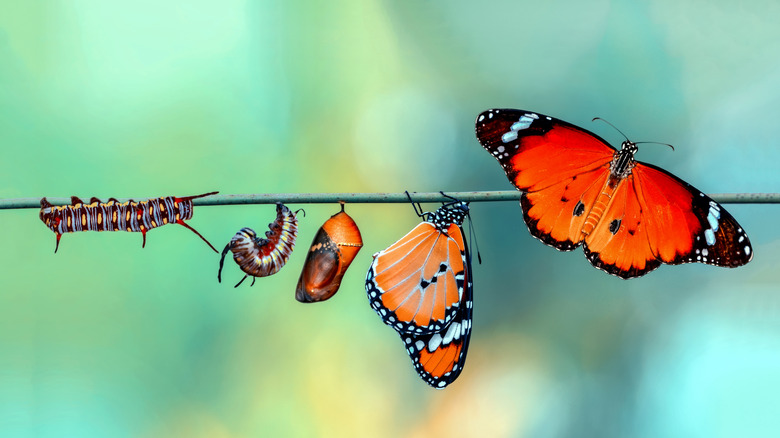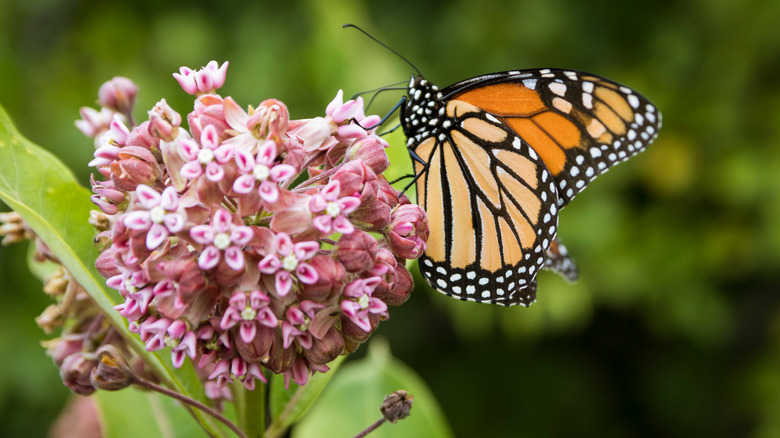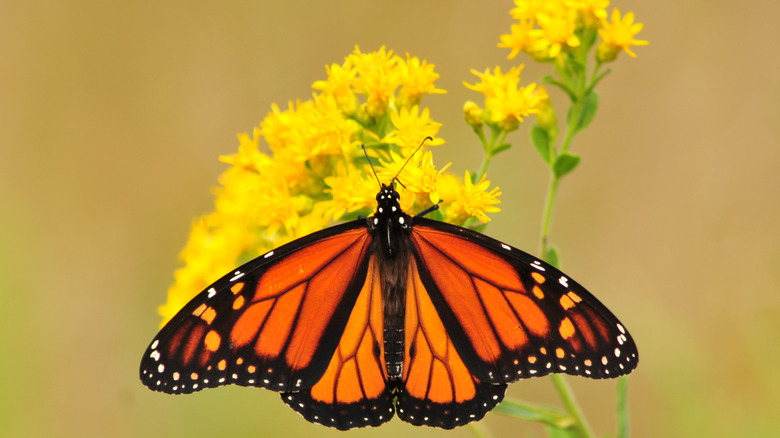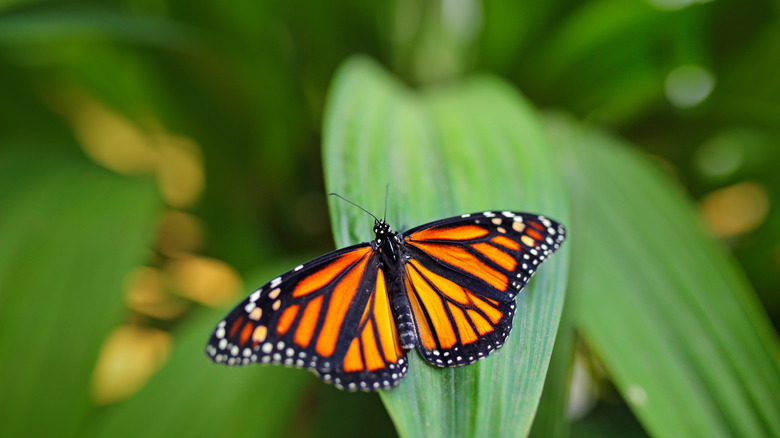How To Attract Monarch Butterflies To Your Garden
Pollinators like monarch butterflies are essential to having a healthy garden. Whether you like to enjoy vegetables, herbs, flowers, or other plants, these guys are ready to help you through a successful growing season. Unfortunately, monarch butterflies are incredible creatures facing decline for several reasons, and because of this, more and more eco-conscious gardeners are wondering how they can attract these gorgeous insects to their gardens to breed.
According to The Spruce, as extreme weather changes and habitat loss threaten butterflies, committed gardeners have made it their duty to support the monarch butterflies in every stage of their short life cycle. If you've been working on attracting other pollinators to your garden, such as bees or hummingbirds, you might already have a lot of the things you need in your yard already. Like the little bees and stunning hummingbirds, monarch butterflies love diverse nectar-rich flowers and easy-to-access shelter. With a little help, you can soon be on your way to supporting a good-sized population of these beautiful butterflies.
Grow native milkweed
Milkweed is the most important thing you need to attract monarch butterflies to your garden; they cannot reproduce without it. There are actually several different types of milkweed in the Asclepias genus, but before planting a particular species in your garden, you should do your research. Santa Lucia Conservancy warns us that certain milkweed species, such as Asclepias curassavica, aka tropical milkweed, can host protozoan parasites that infect monarch butterflies. That's why it's imperative to find out which kind of milkweed grows best where you live or which one is native to your area.
Technically, you can also attract monarch butterflies to your garden without milkweed; this plant is only necessary if you want the female butterflies to lay their eggs in your garden. However, giving monarchs a place to bear their children will certainly create a large population of creatures to watch dance across your flower beds. In addition, their pollination habits will also help the health of your flowers.
Plant sources for nectar
In addition to milkweed, you will also need to plant nectar-rich flowers to feed adult monarch butterflies. The Spruce specifically recommends lilacs, goldenrods, at least one butterfly bush, cosmos, lantanas, and zinnias; though, you should remember that butterflies always prefer native plants. While you are researching milkweed, you should also perform a handful of searches on the topic of native nectar-rich flowers in your area.
Morning Chores reminds us not to collect wildflowers from our local hiking or camping spots. Instead, if you notice butterflies flocking to a certain plant, simply jot down what it is or its identifying characteristics. Then, when you get home, you can order seeds or starts from a local or online nursery to plant in your garden. Also, make sure that the flowers you are planting are not invasive species in your area. While it's important to support the monarch butterfly population no matter where you live, you want to do so responsibly.
Provide shelter
Consider the land before you pick any old spot to grow your pollinator garden: You want to make sure your butterfly population has everything it needs to grow healthy and happy. One thing to specifically look for is an area that uses some trees and shrubs so the monarchs can seek shelter if needed. As per Santa Lucia Conservancy, adult monarch butterflies need places to hide from bad weather; these fragile insects will die without shelter.
Besides trees and shrubs, some monarch butterflies will also find protection from a storm in long grass, underneath large leaves, or in between rocks, according to Birds & Blooms. So when you are constructing your butterfly garden, keep the weather in mind. Consider building rock piles, planting species with large leaves, or growing a bush to protect these unique friends. You can also build or buy a butterfly house if you'd like. A butterfly house looks a lot like a birdhouse, but instead of one large hole, it uses a few smaller slits for butterflies to crawl through. On the inside, there are a few perches where the monarchs can hang out until the storm passes.



